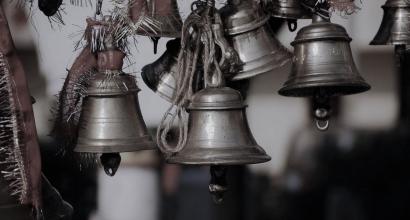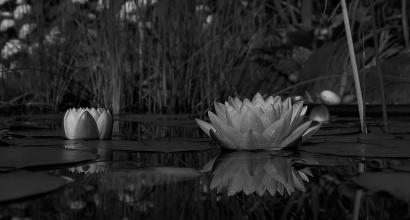For an institution to survive for long and to find fulfilment in executing its objectives, it needs a dedicated set of active workers. At least one person will need to keep working on it day and night. He will remain its supporting pillar throughout its existence and the rest will bolster him through their work. The (Kannada Sahitya) Parishat was fortunate to get a dedicated worker of this nature starting from 1915 for about twenty years. It was Bellave Venkatanaranappa, who worked untiringly through out his life. He was the chairperson for a long time and also looked after finances for a few years. He worked as the editor of the Parishat’s magazine. Venkatanaranappa worked relentlessly, irrespective of the position offered to him. It did not matter to him whether he was an office bearer or not.
It is unfortunate that, today, we cannot find such dedication anywhere in our country. Due to the scarcity of dedicated volunteers, every institution in our country meets its end sooner or later. The maṭhas that were established by our ancient ācāryas and sages for the spiritual welfare of the society, have met with similar fate. Even the institutions founded by stalwarts such as Tilak, Gokhale, Gandhi, Lalalajpat Rai and Rabindranath Tagore have seen their bad days which, at times, have led to their closure. The reason behind this is the non-availability of dedicated workers who are selfless and are sāttvik by nature. The number of applicants for the post of a supervisor or worker for such institutions is no less. They come in large numbers just as people rush to get nominated for elections. The aspirants usually want to occupy dignified positions and land in respectable jobs. There is, at times, a tough competition to acquire such positions. They even climb up the stairs of courts of law. People like them do not actually benefit the organization under question. The aspirants get some benefits and their ego is boosted up too, if they manage to get themselves called the Chairperson or the Secretary. They will also derive other smaller benefits from the organization and the position acts as a stepping stone for them to climb up their career ladder. It is only rare to find people like Venkatanaranappa who sacrifice their personal good for the welfare of the organization they are a part of.
Studenthood
Bellave Venkatanaranappa's father was a post man in the old postal system of the erstwhile Mysore province. Bellave is a small village, famous for its market, in the Tumakur taluk (Tumakur is a district of the state of Karnataka today). Venkatanaranappa's family lived with dignity and was known for its character and humility.
After completing his high school education in Tumakur, Venkatanaranappa moved to Bangalore and joined the Central College. Back then, John Cook was the principal, a man who was wellknown in the academic circles. Venkatanaranappa was one of his favourite students. John Cook was an expert at Physics and his book was used as a textbook for a long time. Cook was a disciplinarian in administrative matters too. He was proud of his institution and its students. If a prospective student mentioned that he was related to one of the students who had studied at the Central College, his admission would be easened. It was probably because of the exposure to post-office since his young age or due to the tutelage under John Cook, that Venkatanaranappa developed his quality of giving attention to detail. It is said that his brothers shared his nature too.
Mr. Venkatapatayya
Bangaloreans such as Mokshagundam Krishnamurthy, D Raghavendra Rao, G. Krishnamurthy and Bellave Venkatapatayya, the younger brother of Venkatanaranappa, were classmates in the Law College in Mumbai. They shared a rented room in Mumbai and had appointed a cook to take care of their daily meals. They lived together and shared their living expenses. Venkatapatayya was given the charge of looking after the finances. Once, just before vacation, when they all had to depart to their hometowns, they approached Venkatapatayya to settle their accounts. They had calculated approximately what each one owed and handed it over to him. A meticulous Venkatapatayya did his calculations to the last decimal and figured out that even after Mokshagundam Krishnamurthy had paid for his share of expenses, there was an excess of three paisa that he had paid. Along with the letter Venkatapatayya sent from his hometown, he had attached another note. This was an On Demand note written in the name of Mokshagundam Krishnamurthy. Once Venkatapatayya had returned to Mumbai, Krishnamurthy was to show him the note and get his three paisa back. One couldn't send a Money Order for three paisa. Moreover, sending a card or Money Order would cost more than the amount owed. Thus, this was given as a memo.
This was his caluclative nature.
Physical appearance
Venkatanaranappa's physical appearance was unique and needs to be described too.
He was tall but not fat. He would pass of as 'thin' or 'lean'. He had quite a fair complexion. There was no sign of lethargy or carelessness in his demeanour. His arms, legs, back and neck were always erect as if indicating that he was ready for any task at any moment. His face was always pleasant. He wore a ‘rumālu’ (turban) on his head and it was tied in the traditional mysore style. It border was only rarely visible. He wore a bright, white coat and an uttarīya (upper cloth). The uttarīya was always well-folded and pressed. He wore a white dhoti in the traditional pañca-kaccha style. He sometimes held a short cane in his hand. It neither served as his walking stick nor as a weapon - it was an additional aspect of beauty to him. What needs to be mentioned at any cost about him is the pocket watch that he carried and the chain that came along with it. He usually kept the watch in the left top pocket of his coat and the chain would coil around the button of his coat. The silver chain looked like a traditional 'uḍadāra', that is usually worn round the hip. A pendant dangled down from the end of the chain that was tied to the button. The pendant was about 2.5-3 inches in width and about four inches long. There was a clip at the top of the pendant and a few small pieces of paper were attached to it. These had a small lid to cover them and he always had a screw-pencil with him. He was never found, throughout his life, without the chits of paper and the pencil. Whenever anyone told him something important, when he happened to recollect something significant or if there was an important engagement for him to look into, he would immediately note it down. Once written, it was like the writing of Chitragupta. This is what irked us at times! If there was an invitation that read 'the event is going to take place in the auspicious time that falls between 7 and 7.30 AM in the morning', Venkatanaranappa would be present at the venue at 6.59 AM! 6.58 AM was too early and 7.01 AM was too late for him. This is how punctual and disciplined he was!
'Sarvāyudhi'
Let us name the other object that Venkatanaranappa always carried as 'Sarvāyudhi' (An all-purpose-weapon). It was manufactured in Germany, a country about which he had immense respect and admiration for. The reason was that he felt the Germans were leaders of the world in scientific advancement. Sarvāyudhi was in Venkatanaranappa's pocket at all times. On a first sight, it looked like a knife. On a closer look, however, it revealed itself to contain a thick needle, a pair of scissors, a cork screw, a screw driver, a nail cutter and several other smaller instruments. Venkatanaranappa used these 'weapons' from time to time as the need was felt.
The pocket clock, his small notepad and the Sarvāyudhi - all revealed how meticulous he was.
This is the seventeeth essay in D V Gundappa’s magnum-opus Jnapakachitrashaale (Volume 3) – Sahityopasakaru. Thanks to Hari Ravikumar for his thorough review











































